Next: Summary Up: Longitudinal electrodynamic forces Previous: Analysis of experiments
![]()
![]()
![]()
![]()
Next: Summary
Up: Longitudinal
electrodynamic forces Previous: Analysis
of experiments
Having thus discussed the different experiments and theories we will now focus on some possible applications.
The application of the multi-arc generator in current limiting is obvious. For low currents it is a good conductor. As the current rises into the kA-range arcs develop, first in some places, and as the current rises, between all the sections. The resistance thus increases with the current.
As suggested by Ruscak and Bruce, this could make it useful as a self-resetting current limiter in the kA-range. In lightning arresters, the multiarc generator could be substituted for the resistance blocks, used to dissipate the lightning energy [62].
The following liquid metal pump was invented by Hering and his coworkers, to create a unidirectional flow in a furnace, Figure 5.1A.
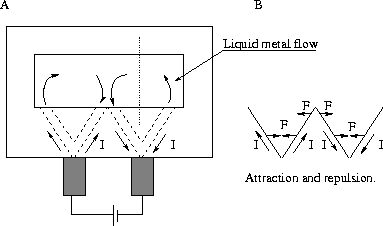
Figure 5.1: (A) Hering's liquid metal pump. (B) Seat of forces.
A strong circulation of metal was observed when current (DC or AC) was switched on. The direction of the electric current did not influence the metal flow [33, 34]. As the Ampère formula predicts the force to be in the line in between the current elements, one component of the force must be in the longitudinal direction (in the direction of current flow), as the currents are inclined towards each other. As the net longitudinal force from the middle hollow conductors isn't balanced by forces at the outer ones, Figure 5.1B, the circulation of metal results. If the construction is slightly modified it can pump metal between different furnaces. This may e.g. be achieved by inserting a conducting wall at the dotted line in Figure 5.1A.
Water-arc explosions have long been used in metal engineering to create high pressures in `electrohydraulic forming'. An arc is discharged in water, creating a high pressure which then shapes a metal sheet. The development has been based on trial and error, as the nature of the explosions has not been well understood.
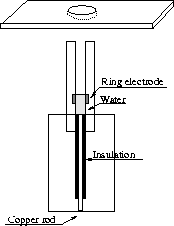
Figure 5.2: Punching of metal with water-arc explosions.
The water explosions can also be used for punching, Figure 5.2. In one of Graneau's water-arc experiments a 3.8g water column punched a clean 13mm hole in a 6.4mm thick aluminium plate, after having travelled 10cm in the air [25]. The impact velocity was around 1000m/s.
The electrodynamic explosions could be used to drive an explosion motor, Figure 5.3.
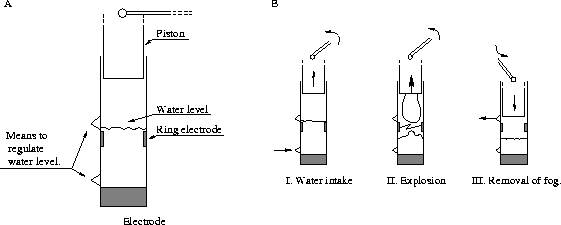
Figure 5.3: The electrodynamic explosion motor.
An arc discharge causes a directed explosion in the water. The impact of the water onto the piston creates a torque on a crankshaft. The piston need not even fit in tight with the cylinder, as it is the impact of the water, and not gas pressure, that causes the force. This motor would have several advantages:
One disadvantage would be:
Based on his own experiments with water explosions and the liquid mercury fountain, Graneau proposed the following device for water-arc jet propulsion [23], Figure 5.4.
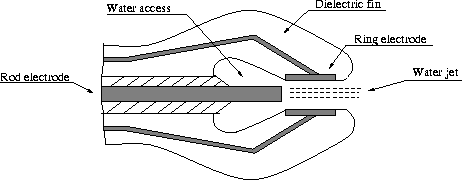
Figure 5.4: Water-arc jet for the propulsion of ships and
submarines.
Water is expelled from the rod by the electrodynamic repulsion (explosions), and is continuously supplied from behind the rod. The device has the advantage over Magnetohydrodynamic (MHD) propulsion that it does not need any superconducting magnets. MHD propulsion is based on the Lorentz forces acting on an electrolytic current in a strong magnetic field, the immense magnets needed being its main drawback.
What about the efficiency of the jet? The thrust force is given by:
![]()
where ![]() is the magnetic permeability of vacuum, I the current and k
a performance index. For the water-arc k is about 1000 or more.
As a comparison the railgun has
is the magnetic permeability of vacuum, I the current and k
a performance index. For the water-arc k is about 1000 or more.
As a comparison the railgun has ![]() . Currents of the order of kA can produce a useful thrust. According to
Graneau, water heating will not be a serious problem, whereas the
ionization
may cause losses. With a continuous flow the jet may be quite silent.
. Currents of the order of kA can produce a useful thrust. According to
Graneau, water heating will not be a serious problem, whereas the
ionization
may cause losses. With a continuous flow the jet may be quite silent.
As we have seen, high pressures and velocities can be obtained with
the water explosions. Could this be used to initiate fusion processes?
Hawke suggested that a mass impacting on a deuterium-filled pellet with
a speed of 150 km/s would initiate fusion reactions [31].
In 1989 Beuhler et al. demonstrated that fusion reactions occur at
impact
speeds of about 100km/s. They used small deuterium clusters, which were
easy to accelerate, and let them collide with deuterium-saturated
titanium [6].
The situation is very different from thermonuclear fusion, which is
governed
by internal thermal collision processes![]() .
Rambaut and Vigier have invented a method to accelerate heavy water
with
the electrodynamic explosions [58,
59].
.
Rambaut and Vigier have invented a method to accelerate heavy water
with
the electrodynamic explosions [58,
59].

Figure 5.5: Plasma fusion chambers. (A) Impact fusion, (B)
Impact
fusion and arc-discharge fusion.
Water is ejected into a chamber by `water-arc guns', and collide in the center, where fusion reactions occurs, Figure 5.5A. In a similar chamber, Figure 5.5B, arcs can be discharged in the center of the chamber, making the situation resemble that of capillary fusion. The fusion process creates pressure and heat, which could be converted to useful energy. As the plasma need not to be uniformly heated to 5 million degrees, this may prove a more efficient way to release nuclear fusion energy than conventional hot fusion approaches.
The longitudinal forces have been used in capillary fusion, a low energy fusion experiment invented by Lochte-Holtgreven et al. [42].
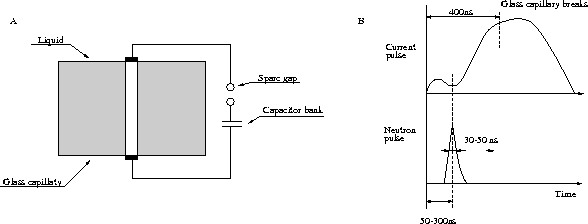
Figure 5.6: (A) The capillary fusion experiment. (B) Current
pause
and neutron burst.
A thin glass tube filled with e.g. ![]() (lithium solved in heavy ammonia) is subjected to current pulses from a
capacitor bank charged to 150-200kV typically, Figure 5.6A
. After 50-200ns a drop in the current occurs due to longitudinal
disintegration
of the solution. During this drop, or `current pause', a burst of
(lithium solved in heavy ammonia) is subjected to current pulses from a
capacitor bank charged to 150-200kV typically, Figure 5.6A
. After 50-200ns a drop in the current occurs due to longitudinal
disintegration
of the solution. During this drop, or `current pause', a burst of ![]() neutrons is produced, Figure 5.6B.
(With higher currents as many as
neutrons is produced, Figure 5.6B.
(With higher currents as many as ![]() have been produced.) If the heavy ammonia
have been produced.) If the heavy ammonia ![]() is substituted by light ammonia
is substituted by light ammonia ![]() , no neutrons are produced.
, no neutrons are produced.
The energy supplied in these experiments is about 500J, sufficient to heat the capillary uniformly to about 5000K, and probably less, as ionization energy isn't included in the calculation. Thus the neutrons cannot be produced by thermonuclear reactions; rather acceleration processes seem to be the candidate [37, 60].
As mentioned above, the wire disintegrates into beads during the
current
pause. In the cases where solid deuterium or deuteriated polyethylene
is
used the fragmentation resembles the `wire striations' photographed by
Nasi ![]() owski [51,
24],
see Figure 5.7.
owski [51,
24],
see Figure 5.7.
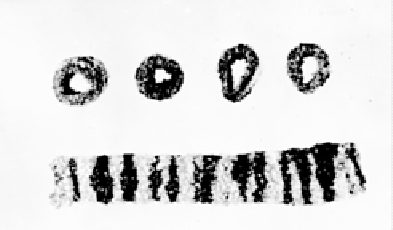
Figure: Striations produced by exploding wires. The dark bands
are
oxidized copper. From Jan Nasi ![]() owski, Instytut Elektrotechniki, Warsaw, Poland.
owski, Instytut Elektrotechniki, Warsaw, Poland.
Rambaut has proposed that the fusion reactions may be caused by quantum tunneling of deuterium. The presence of screening electron clouds would dilute the repulsion between the nuclei, making the probability of tunneling substantial [60, 61]. The situation is quite different from the nuclear reactions that occur in particle accelerators, where the nuclei collide head on in vacuum.
An advantage of this kind of fusion experiment is that it is relatively cheap and simple to carry out.